Have you ever been involved in an argument over how useful or useless the receiver truing tools are? If the answer is yes, go ahead and hit that like and subscribe button. Do it, get on the mailing list.
“Upper receiver lapping is unnecessary” When the topic of receiver lapping comes up, there are two camps… the believers, and the non-believers. What can a $15 dollar tool that attaches to a drill do that a $15k CNC machine can’t? I have had that question myself. It is an interesting proposition… does a modern AR15 needs a fool in the garage with a hand tool to enhance the accuracy of the platform past the factory? This has led to many heated discussions online. After purchasing the tool for myself, I came to my own conclusions.
My opinion is this: No receiver is assembled in this house without the receiver lapping tools sweet, sweet kiss. Now for my story:
Is Lapping Necessary?

I purchased a Wheeler Engineering upper receiver lapping tool from Amazon.
When I opened the Wheeler Engineering package, I had some concerns. I was kinda sad that the Wheeler tool I opened looked sloppy. I’m talking “It’s Friday afternoon and we clock out in five minutes but we also live in China” sloppy. It had a flex shaft adapter drilled OFF CENTER. It was blued the worst god awful bluing I had ever seen. THIS THING IS GOING TO MAKE MY RIFLE BETTER?
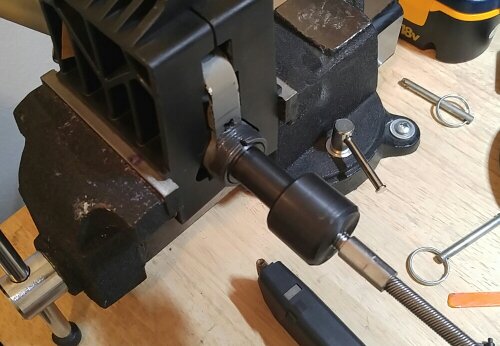
I was skeered.
I promptly took it to a precision rifle shop and had them check it out on the lathe. Surprisingly enough, the two important surfaces… those which rotate in the receiver and against the receiver face were true. The tool was OK to use as is, but they cleaned it up a bit for me. So why did I buy this thing in the first place? My Larue 12.0 Equipped A2 rifle. Ever since I installed that rail, I noted that the barrel leaned a little closer to one side than the other. This rail sat perfectly straight in my earlier build, so I suspected the A2 receiver was to blame, and not the rail.
The A2 also had excessive L windage dialed in. Yet another sign to me that something wasn’t quite right. In spec enough to function sure, but I wasn’t happy about that sloppy aperture being so far off dead center. I wanted it PERFECT.
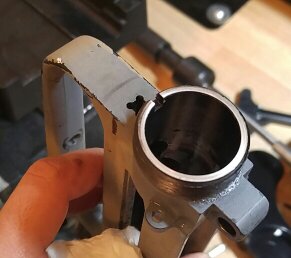
When perfection comes…
Off came the rail, on went the lapping tool, and when I re-assembled everything was straight in the rail. Sighting in was even better. I was a few clicks off the center of the wind-age. A few clicks? Two clicks off dead center. DED CENTER. DED.
Authors lapped rifles from L to R: Detachable Carry Handle A5 6 clicks left. Carbine, 1 click Right. A2 Rifle, 2 clicks left. All zeroed with M193
Is That All?
The A2 rifle shot well, it certainly didn’t need to be lapped. It was reliable, the windage was acceptable, and it was a lot of work to tear it down and rebuild, then re-zero. So is it necessary? More and more, I would argue, that yes it is. The propagation of skinny rails that hug the gas black have made it imperative that the gas block remain centered in the rail. Even a little bit of lean will reduce the clearance of the gas block enough to where it could possibly contact the rail, thereby disrupting barrel harmonics.
I think that is a pretty compelling argument in and of itself, but still many (including industry professionals) will say it’s a useless or unnecessary process. “The receiver faces are trued better from the factory on our najita kiwata 24.5 axis warp drive mill than you can ever meet at home with your $20 dollar junk tool and a hand drill, you peon idiot scum!” At least, that’s how I feel about the no lapping ninja’s and their typical response. Very Dismissive. Hurtful. It goes straight to the heart of my human pride it does.
Well well well… have I got a link for them…
A user had a rail that was crooked… or was it?
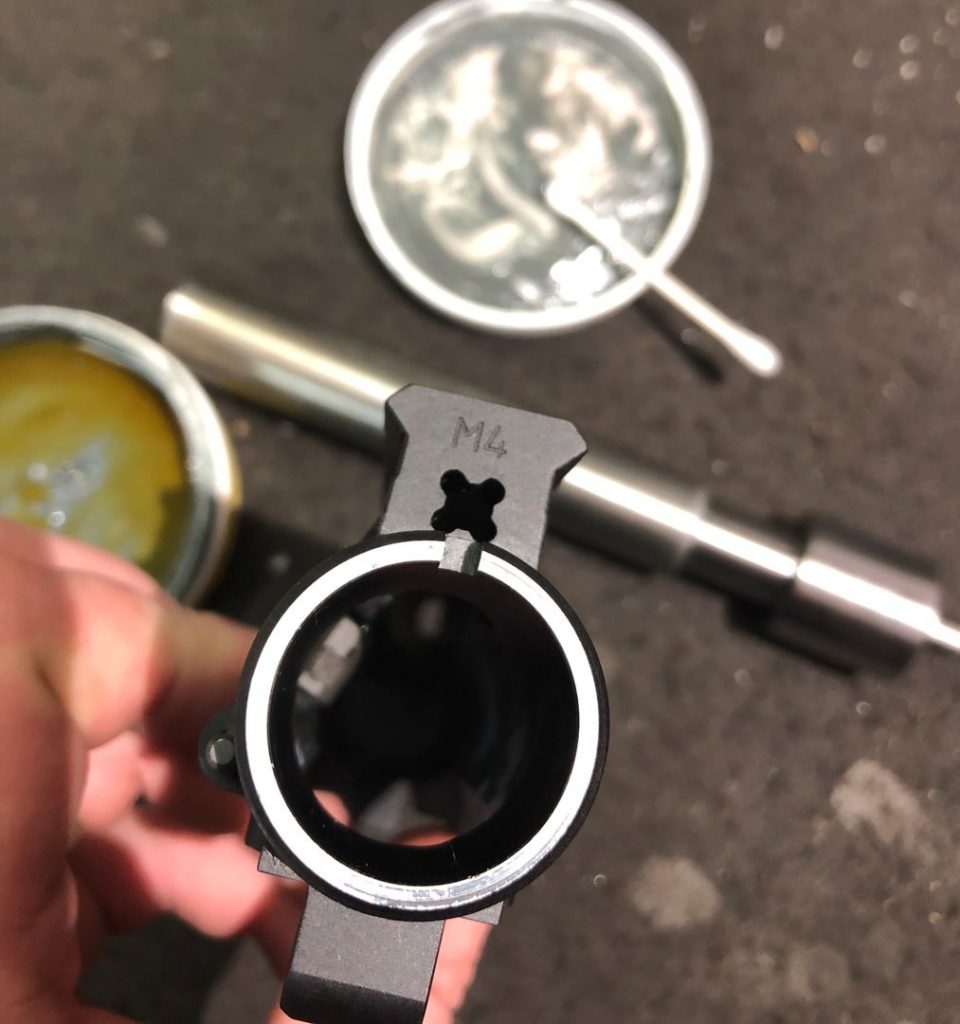
Source: Midwest Industries @ AR15.com Note the barbaric receiver lapping tool in the background.
The link above is a user at AR15.com who noted that their rail was “crooked” and in that thread, a Midwest Industries rep (AKA PETE) came by to deliver some top-notch customer service. They took the upper, checked the rail, checked the barrel extension, and finally discovered what I knew all along… the upper receiver face was not true. They used a $25 dollar hand-drilled lapping tool to correct the issue, and magically, the barrel became centered in the rail.

I TOLD YOU. WE ALL TOLD YOU. DAMMIT WESLEY!
That smug feeling of “I told you so” keeps me warm at night, but let’s dig into it a bit further. Do lapping tools do anything other than center the barrel? (Is that not sweet enough?) Yes. The barrel extension and its interface are an important component to rifle precision. The receiver face must be perfectly flat against the barrel extension flange, and the barrel nut must press upon the receiver extension evenly. Pssst… Word on the street is, you want at least 65 ft lbs of torque. Then you want a receiver that requires a thermal fit to the barrel extension. If this is not possible, fill the void between the barrel extension and receiver with a bedding agent, such as Loctite 680.
Does all this seem excessive? Nonsense? It’s not nonsense. Everything matters. Detail is everything. If you want the same thing to happen the same time as last time you need the same things to occur each time, every time, and all the time, just like last time. Got it? A crooked barrel and the unique, off-axis harmonic whip will add a wildcard to your load development. The thermal expansion of the receiver during long strings may allow the barrel extension to slip and shift with each shot since you only torqued that barrel nut to 35 ft-lbs. Your optics might need excessive wind age and you lose half your POI adjustment to the left, while your R windage has double than is necessary. Getting the picture?
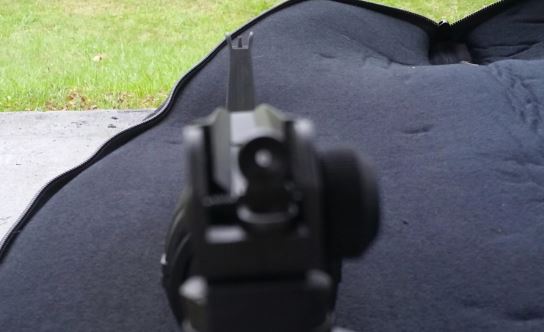
MICHAEL SCOTT: “NO GOD! NO GOD, PLEASE NO, NO, NO, NOOOOO…”
How much do these details matter? I would like to refer you, kind readers, to an article titled “Secrets of the Houston Warehouse” and the excellent summary at precisionrifleblog.com. This article is eye-opening to understanding how the smallest variables affect accuracy. The author had to install a barrel assembly by PULLING the assembly towards himself to make sure the lapping compound would make full contact with the threaded barrel and receiver. To neglect that step would be destructive to the finest pursuit of accuracy.
Accuracy is Incremental. In some cases, truing your upper receiver may only help to an un-measurable degree. In other cases, it may make much more of a difference to shooters who can see their barrel is visibly off-center. Almost touching one side of the rail is a clear problem waiting to surface.
After reading that, if you don’t understand the relationship between the small details and precision, then God help you. You may not be concerned with that much detail, because your rifle is a self-defense carbine. That’s OK, it’s understandable. If you are an industry professional who can’t let go of the dogma and explore the possibility that yes, there are benefits to receiver lapping, then it’s inexcusable. Now there are some receivers that are likely more quality controlled than other brands, that’s for sure… but Spike’s is a will known, quality brand. Is their six-axis off? I have my suspicions it’s related to the anodizing:
Typical standard clear and color anodizing creates an aluminum oxide film in the range of .0002 to .0008 inches, (.005 to .020 mm), on each surface. Hard anodizing is typically in the range of .0005 to .003 inches, (.013 to .076 mm), the most common being .002 inches. (.051 mm). – https://www.alphametal.com/blog/item/3-dimensional-growth-during-anodizing
Could uneven growth of surface anodizing be to blame? If there is an engineer in the house, please tell us what you think in the comments!
Wrapping Up:
So, should you lap your upper receiver? Do you appreciate centered sights, evenly loaded bolt lugs, consistent barrel harmonics, barrel centered in the rail, and the potential benefit of enhanced precision? Then yes. If you don’t want those things, then no. Don’t do it. If your rifle zero’s fairly close to dead center then you may not need it at all. You will receive too little benefit to tear down your rifle. All I know is that my rifle improved significantly in centering of the barrel in the rail and centering of the windage to a near-neutral position. I got rid of the free float rail, and the rifle is still dead nuts to center when I re-zeroed.
If you need a tool, Brownells now carries their own in house receiver lapping tool. Check it out here.
Till next time, LOTHAEN OUT.





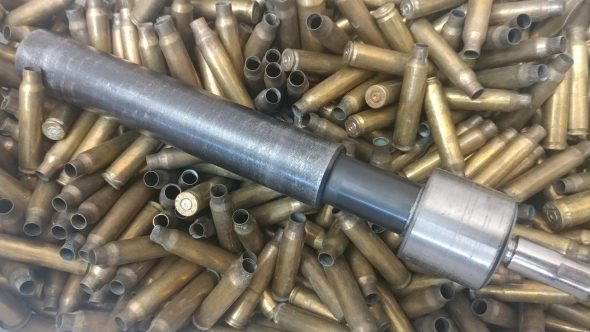



Ok, so I’m going to lap my receiver.
Next question:
Do I lap said receiver vertical or horizontal??
I have done it both ways. Lately I have been lapping with the receiver vertical. The danger is that lapping compound could fall into the receiver but so far I havent had any problem with this method.
Loctite 6920.
Is that the same as green loctite 648?
And how hard is it to break a barrel loose after using it?
What if you want to eventually change a worn barrel?
My mistake I mislabed my loctite. LocTite 680 is the correct product. I will correct it above. However i have used many threadlockers to bed a receiver including RockSett and Blue loctite. 680 is thicker though and is often recomended for such use.
I’ve yet to come across a reciever needing to be lapped, you buy from reputable companies with stringent enough QC you may never need to. Though I imagine every poverty pony and poor state armory upper coming off the line needs lapping
Buy mega uppers.
Thank me later. I’ve never had to true the face of one.
And .. yes I believe it’s in the anodizing process / qc.
As far as “necessary” .. no .. but my dad does it to ever rifle .. I do it only when I buy a cheap upper for a build. With all upper rcvrs even a good quality one can get to the consumer. So .. yes I even check every mega upper rcvr I buy.
For a precision rifle .. everything matters .. so at least check the face for square. And don’t let it pass until it is. Lap as required.
It’s easy and cheap .. what’s not to like about building a superior rifle?
Have you actually done it to any Mega uppers, or do you only lap cheaper ones?
I don’t recall a single mega upper requiring any work.
How do you check your uppers for squareness?
I would like to know this as well.
Sorry guys comments have been broken. Fixed.
Typically i will look at the barrels placment in the free float rail. If it’s off center, the receiver needs lapping.
If it requires excessive windage, then i will tear it back down and lapp the receiver.
It’s gotten to the point where every receiver is lapped from the get go.
Any thought ever that the rail/hand guard is actually what is not centered? I have seen a couple by reputable firms that once in place and torqued to their spec had considerable bend to them. I do of course agree with your assertion that the barrel not being centered is an absolute requirement for investigation of all mating surfaces.
The ones that speak in absolute no have never checked a receiver for run out. Period.
As an engineer at a very large Aerospace company I can tell you straight up that the anodize could be the issue. Especially if it is sent out to a sub contractor to perform the task. Anodize thickness can vary enough to make a difference. Where ever there is a process, there is the ability to do it differently every time. The CNC machines are super accurate but the application of anodize is a much larger variable.
I’m dealing with an 5.56 build right now that shoots 7 MOA right and 5 MOA high with flush/centered peep sight and flush front sight post at 50m. I can’t physically see any misalignment issue but even after purchasing a scope (intended for a different rifle) and mounting it on the rail it shot roughly the same (far right by my calculations (1in riser + built in rise of the scope mount).
I’m at 28 clicks left on the peep sight and 6 clicks out on the front sight post which is eating up 2/3 of my windage and probably 3/4 or my front sight post adjustment (any more than 8 and the FSP would be unstable if not ready to pop out).
Note: This is a full upper (forged, 20″, 1:7) ordered from and assembled by the manufacturer of all the upper parts, not throwing in names under a bus cause the milled, 11.5″, 1:7 ordered at the same time shoots better than I’d have expected from any company. 🙂